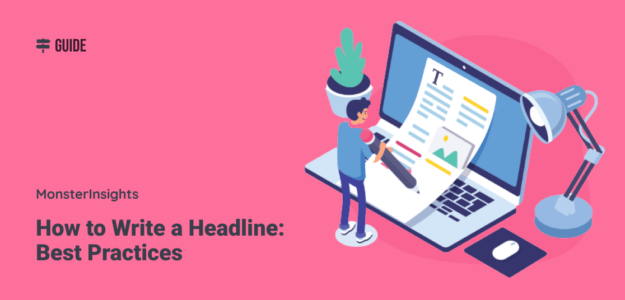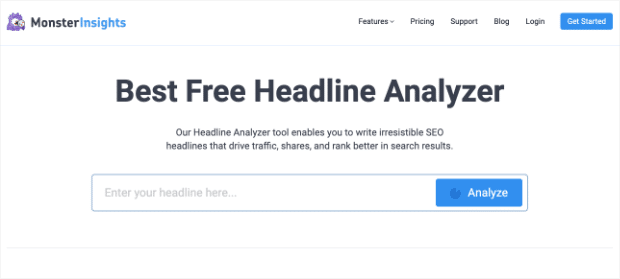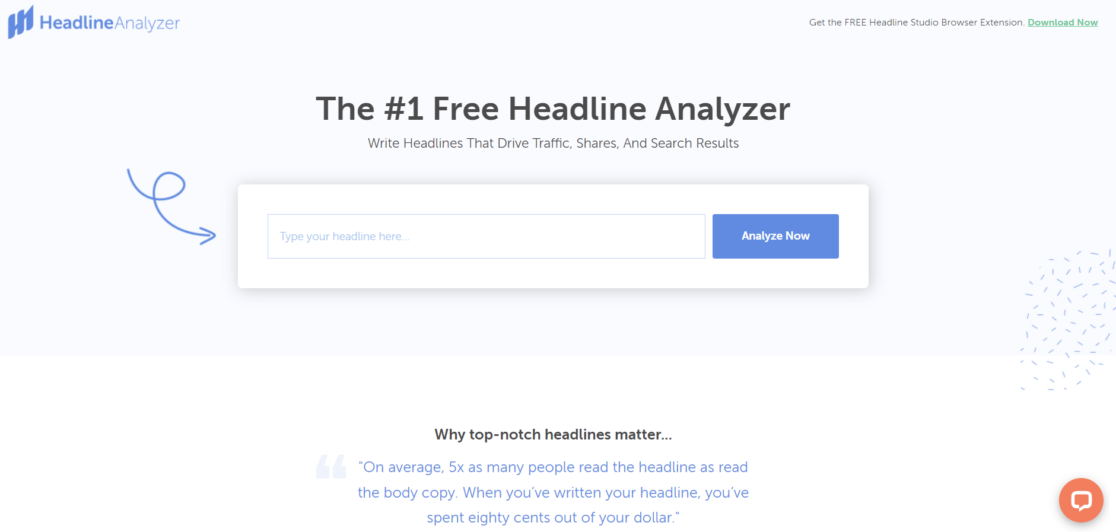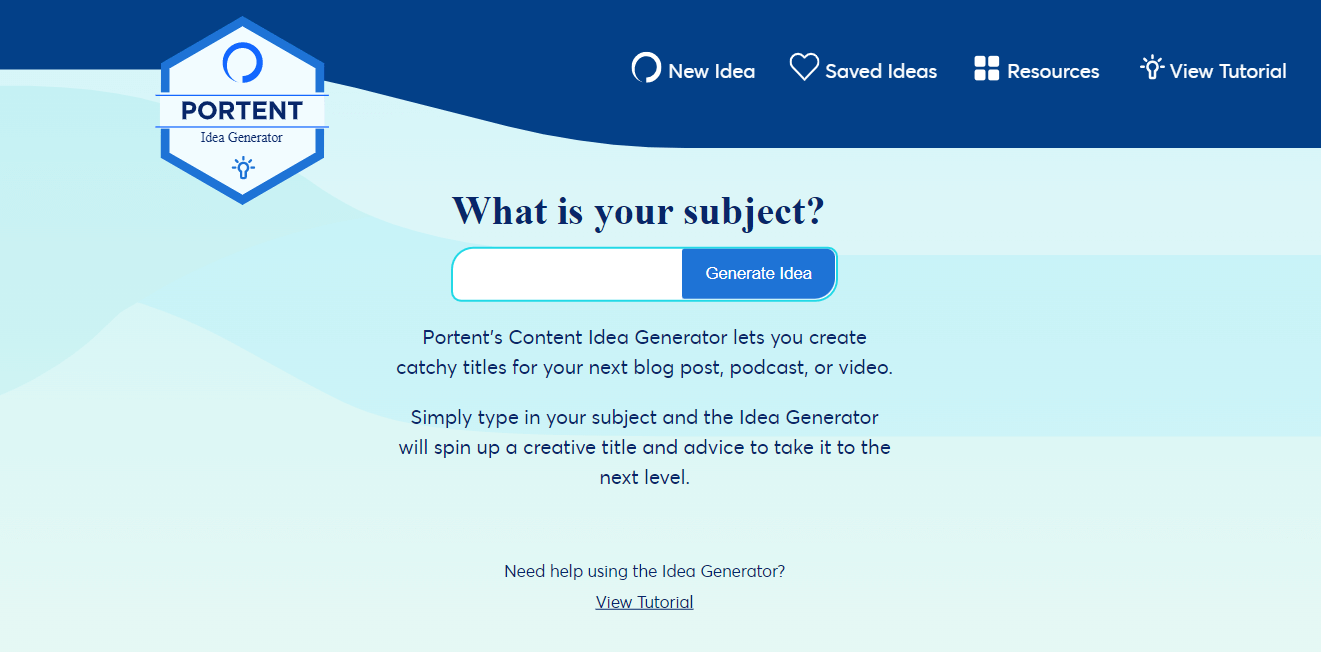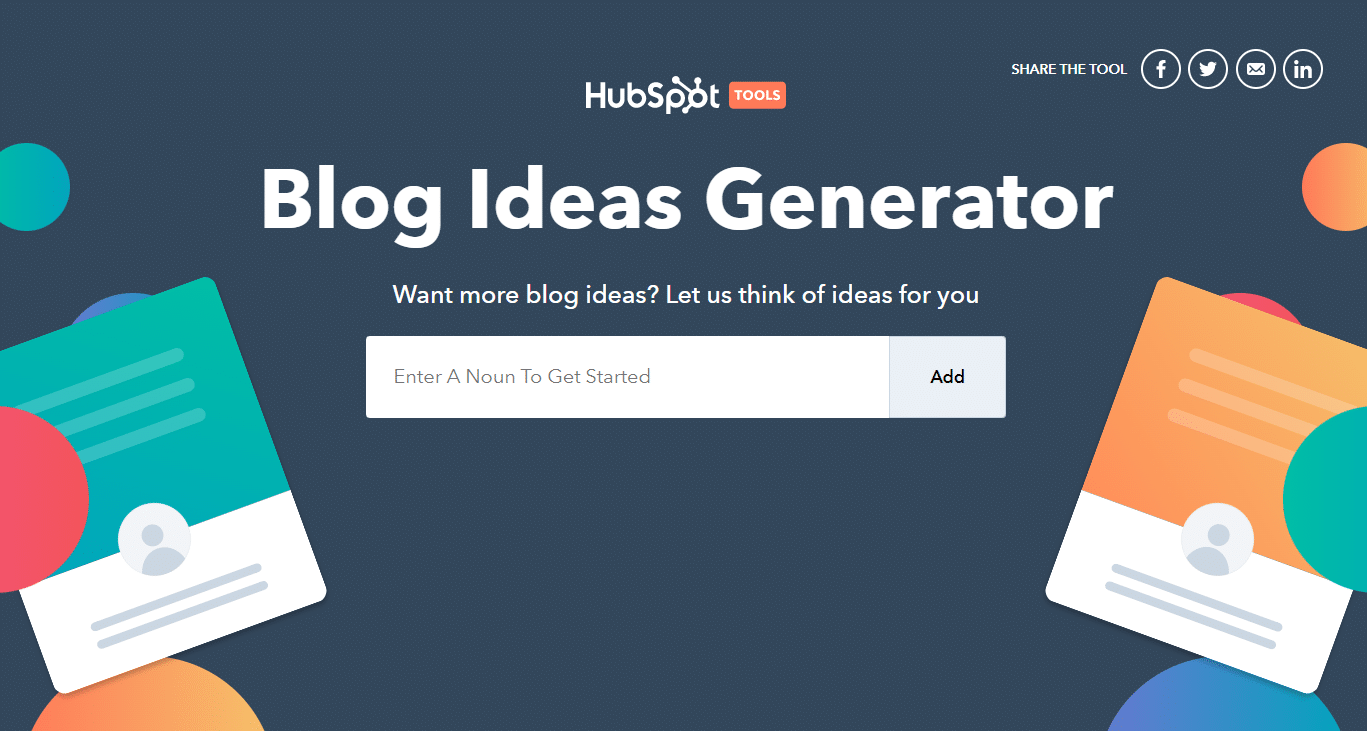You’ve heard about the importance of writing great headlines, but what exactly does that mean? You’re probably wondering how to write a headline that’s optimized both for SEO and your audience.
Writing great headlines can be tricky. Luckily, with a few headline writing best practices and tools in your arsenal, you’ll get good at it quickly.
In this article, we’ll go over what makes a headline great, give you a comprehensive list of best practices to follow, and look at a few tools that can help.
What Makes a Headline Great?
When you’re writing a headline for the web, it can be difficult to write something that will not only draw in the right kind of traffic, but also perform great in search engines and stand out from your competitors.
The best headlines hit all three of those goals. Not only that, but they’re also the right length. Make a headline too long, and it’ll get cut off in search results. What’s the point in writing an awesome headline if part of it is going to get cut off?
The next time you’re browsing the web, take some notes about what headlines are grabbing your attention. Whether you’re running a Google search or scrolling through your favorite blog or news site, what is it that compels you to click? Taking note of your own tendencies can help you get into the right mindset and gain some ideas for writing your own headlines.
Headline Writing Best Practices
While there’s no one formula that works for every headline, there are a handful of best practices that apply to just about every headline written for the web. Let’s dive in!
7 Best Practices for Writing Headlines: All Headlines Should…
- Be 60 characters long or less, or use a shorter SEO title
- Include your focus keyphrase
- Not be identical to a headline a competitor already ranks with
- Include 1 or more power words
- Include a number when appropriate
- Take search intent into account
- Be one of multiple drafts
Headlines should be 60 characters long or less, or use a shorter SEO title.
If you want to compete in Google’s search results, you want your title to fit in their title spots. If your title is longer than 60 characters or so, it’ll be truncated (cut off) to fit. Let’s take a look at an example:
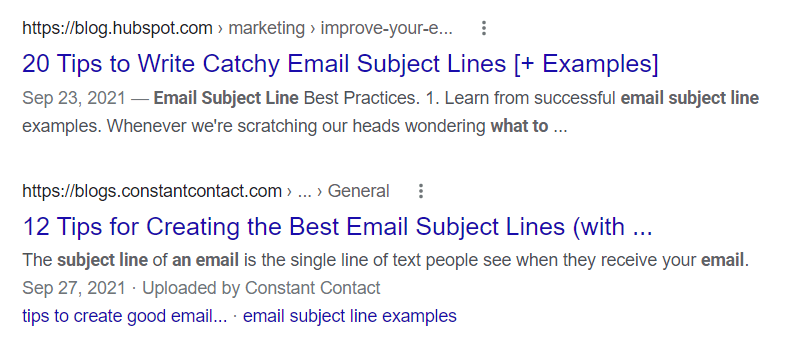
Which one of those headlines do you like better? The top one stands out with the larger list of 20 and the word “catchy”. Plus it has examples! The second one might have examples…maybe that’s the word that’s cut off? We don’t know until we click.
To make sure your headline is as compelling as possible, make sure it’s not getting cut off in search results. To do that, you can either make sure your title is shorter than 60 characters, OR you can let your title be a bit longer but make your SEO title under 60 characters.
If you choose to create a shorter SEO title with a longer main headline, just make sure they’re almost identical so you don’t confuse Google’s crawlers.
For example, the full headline from our screenshot above that’s getting cut off is:
12 Tips for Creating the Best Email Subject Lines (with Examples)
You could solve the truncated title in search results by removing (with Examples) from the SEO title, or you could tweak the whole thing to fit within Google’s constraints. It could be:
12 Tips to Create the Best Email Subject Lines + Examples
We’ve still included their keywords but made it short enough to fit completely in that title spot.
Headlines should include your focus keyphrase.
Every post you write should target one focus keyword or focus keyphrase. If you’re not familiar with this concept, make sure to read What Is a Focus Keyword? Plus 2 Awesome Examples.
Every headline you write must have your focus keyword in it if you want a chance of ranking well for it in search.
Headlines should be unique and not identical to a competitor’s headline.
To write not only a great headline but one that also stands out from your competitors, you absolutely need to take a look at the articles that are already ranking for your focus keyphrase and craft a headline that’s unique.
Of course, your headline can be similar to others already listed, but it definitely needs to be at least a little different. Don’t copy!
Headlines should include power words.
If you want to stand out, use words that will help you do just that: power words. Power words are words that will trigger a psychological or emotional response in your readers.
For instance, remember in the screenshot of search results above, the word “catchy” stood out? That’s because it’s a power word!
To really dive into using power words, bookmark a few lists of them:
700+ Power Words That Will Boost Your Conversions
150 Power Words to Add Some Oomph To Your Copy & Deliver Results
667 Power Words to Drive More Conversions
Headlines should include a number when appropriate.
If you’re writing a piece of content that includes any kind of list, make sure your title has a number in it. Numbers can be super compelling in a headline!
However, be smart and tactical about using them. The number you choose can really make your post ultra-clickable.
In general, short lists and long lists tend to be the most compelling to click on. If you’re trying to follow a how-to, for instance, nobody wants an article called “20 steps to painting your front door.” Yikes! How about “Paint your front door in 3 quick steps.” Sounds much better!
On the other end, those lists of power words we shared above work the best because they’re large numbers. Nobody wants a list of 50 power words when they can click on a list of 700 instead.
Headlines should take search intent into account.
Search intent is incredibly important to writing a great headline (and article), but unfortunately is often a step that writers miss. Before even beginning a piece of content, search the term you hope to rank for with the content you’re about to write and take note of what’s there.
For instance, the article you’re reading right now is targeting the term “how to write a headline.” When we plug that into search, we see that the top result is a step-by-step post, and the rest of the posts on page one are almost all list pieces with a number in the title.
So, when a searcher types in “how to write a headline,” their intention is probably to find either a step-by-step guide or a list of tips. If you write something else, like just a “guide” with no numbers or steps, chances are you’ve missed the mark with what the searcher is looking for.
For more on search intent, read What Do Searchers Really Want? Understanding Keyword Intent.
Headlines should be one of multiple options.
If you flex your brain and write multiple versions for every one of your headlines before choosing one, you’ll have better headlines. Sit with it and think about it for longer, and you’ll have more ideas to pull from or combine to create the best possible headline. Shoot to write at least 3 to 5 ideas down before choosing your title.
Helpful Headline Writing Tools
Did you know there are different kinds of headline tools that can help you write awesome titles your audience will love? Not only are there analyzer tools that’ll tell you how to improve your headline, but there are even generators that will spit out ideas based on a few words you provide.
Here are a few of our favorites.
MonsterInsights Headline Analyzer
The MonsterInsights Headline Analyzer will review your headline and give you ideas for how to make it better.
The Analyzer includes:
- Overall Score: Gives you a score based on how good your headline is overall.
- Score History: Includes scores from titles you’ve recently analyzed.
- Areas for Improvement: Gives you some specific insights into how you can improve your headline.
- Sentiment: Does your title have a more positive feeling, or a negative one? Find out in this part of the report.
- Headline Type: Does your headline type match your article?
- Character Count: Make sure your title will fit in Google’s search results.
- Word Count: How many words are in your title? Make sure it’s not too long or wordy.
- Search Preview: Shows how your title will look in Google’s search results.
- Summary: Summarizes all of the above details.
The best part: the analyzer is free! Get started now.
Headline Analyzer by CoSchedule
Headline Analyzer by CoSchedule will give you tons of information about your headline, including overall scores for both the headline and its overall SEO.
This tool is really a robust tool with a lot of features. It tells you your headline type, analyzes individual words and overall structure, reading level, skimmability, clarity, keyword quality and density, average monthly searches, and more.
You do need to sign up for a free account with CoSchedule in order to use the tool. Once you do, you’ll be able to access a dashboard called Headline Studio.
Portent’s Content Idea Generator
Need some inspiration? Find it with Portent’s Content Idea Generator. It’ll help you create a great headline for your blog post or other content.
Once you input your subject, the generator will spit out different potential titles with different spins on your idea. Keep clicking to keep the ideas flowing!
HubSpot’s Blog Topic Generator
HubSpot’s Blog Ideas Generator is another tool that will spit out headline ideas based on the words you enter. You can enter up to 5 nouns to run through for it to use in the ideas. You can get 5 ideas right away, or enter your email address to grab a full list of 250 ideas.
Try the Blog Ideas Generator now!
That’s it! We hope you found some new ideas for all your headline writing needs.
If you liked this post, we think you’d love The Definitive Guide to Google Analytics for Publishers.
Not using MonsterInsights yet? Get started today!
And don’t forget to follow us on Twitter, Facebook and YouTube for more helpful Google Analytics tips.
